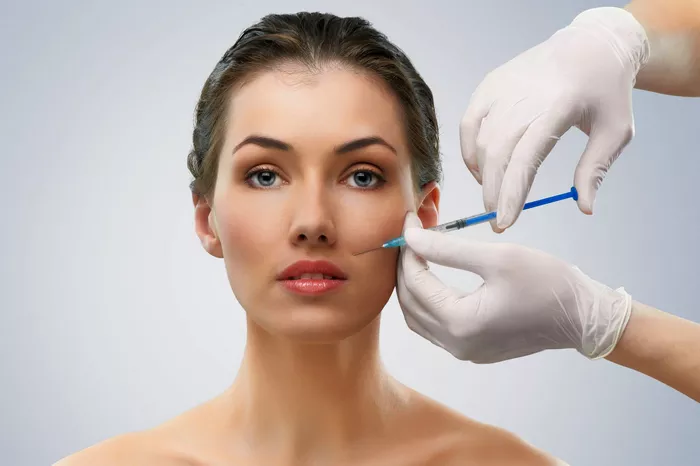In recent years, nonsurgical face lift procedures have gained immense popularity. These procedures offer patients a way to achieve a youthful appearance without the need for invasive surgery. This article explores the seven most effective nonsurgical face lift procedures available today.
Introduction
Aging is a natural process that affects everyone. Over time, the skin loses its elasticity and begins to sag. While surgical face lifts were once the only option to address these concerns, advancements in cosmetic medicine have introduced various nonsurgical alternatives. These procedures provide significant results with minimal downtime and reduced risk.
1. Dermal Fillers
What Are Dermal Fillers?
Dermal fillers are injectable substances that restore volume and fullness to the skin. They are commonly used to smooth out wrinkles and enhance facial contours.
Types of Dermal Fillers
Several types of dermal fillers are available, including:
Hyaluronic Acid Fillers (e.g., Juvederm, Restylane)
Calcium Hydroxylapatite (e.g., Radiesse)
Poly-L-lactic Acid (e.g., Sculptra)
Polymethylmethacrylate (e.g., Bellafill)
How Dermal Fillers Work
Dermal fillers work by adding volume beneath the skin, which lifts and smooths the treated areas. The results are immediate and can last from six months to two years, depending on the filler used.
Benefits and Risks
Benefits:
Immediate results
Minimal downtime
Non-invasive
Risks:
Bruising and swelling
Allergic reactions
Asymmetry
See Also: 9 Procedures For Facial Feminization Surgery
2. Botox (Botulinum Toxin)
What Is Botox?
Botox is a neurotoxin that temporarily paralyzes muscles. It is widely used to reduce the appearance of fine lines and wrinkles.
How Botox Works
Botox works by blocking nerve signals to the muscles, preventing them from contracting. This relaxation of the muscles smooths out wrinkles and fine lines, particularly in the forehead, around the eyes, and between the eyebrows.
Benefits and Risks
Benefits:
Quick procedure
No downtime
Effective for dynamic wrinkles
Risks:
Temporary side effects (e.g., bruising, swelling)
Potential for drooping eyelids
Requires regular maintenance
3. Ultherapy
What Is Ultherapy?
Ultherapy is a non-invasive procedure that uses focused ultrasound energy to lift and tighten the skin.
How Ultherapy Works
Ultherapy stimulates the production of collagen by delivering ultrasound energy to the deep layers of the skin. This process gradually lifts and tightens the treated areas over several months.
Benefits and Risks
Benefits:
Non-invasive
No downtime
Long-lasting results
Risks:
Temporary discomfort during the procedure
Redness and swelling
Results may vary
4. Thermage
What Is Thermage?
Thermage is a radiofrequency treatment designed to tighten and contour the skin.
How Thermage Works
Thermage uses radiofrequency energy to heat the deep layers of the skin, stimulating collagen production and remodeling. This results in tighter, smoother skin.
Benefits and Risks
Benefits:
Non-invasive
Single treatment
No downtime
Risks:
Temporary redness and swelling
Discomfort during the procedure
Variable results
5. Thread Lift
What Is a Thread Lift?
A thread lift is a minimally invasive procedure that uses temporary sutures to lift and tighten the skin.
How Thread Lift Works
Threads made of biocompatible materials are inserted under the skin to lift sagging areas. These threads also stimulate collagen production, enhancing the lifting effect over time.
Benefits and Risks
Benefits:
Immediate results
Minimally invasive
Stimulates collagen production
Risks:
Bruising and swelling
Infection risk
Thread migration or extrusion
6. Laser Skin Resurfacing
What Is Laser Skin Resurfacing?
Laser skin resurfacing uses focused light energy to remove damaged skin layers and stimulate collagen production.
Types of Lasers
Ablative lasers (e.g., CO2, Erbium)
Non-ablative lasers (e.g., Fraxel)
How Laser Skin Resurfacing Works
Ablative lasers remove the outer layer of skin, promoting the growth of new, healthier skin. Non-ablative lasers target deeper skin layers to stimulate collagen without damaging the surface.
Benefits and Risks
Benefits:
Improves skin texture and tone
Reduces fine lines and wrinkles
Can treat scars and pigmentation issues
Risks:
Redness and swelling
Risk of burns or scarring
Downtime varies by laser type
7. Microneedling with PRP
What Is Microneedling with PRP?
Microneedling with PRP (Platelet-Rich Plasma) is a combination treatment that enhances skin rejuvenation.
How Microneedling with PRP Works
Microneedling creates micro-injuries in the skin, stimulating collagen production. PRP, derived from the patient’s blood, is applied to the treated areas to enhance healing and rejuvenation.
Benefits and Risks
Benefits:
Enhances skin texture and tone
Minimally invasive
Accelerates healing
Risks:
Redness and swelling
Risk of infection
Multiple sessions may be needed
Conclusion
Nonsurgical face lift procedures offer a variety of options for those seeking to rejuvenate their appearance without undergoing invasive surgery. Each procedure has its unique benefits and risks, and the choice of treatment should be tailored to the individual’s needs and goals. Consulting with a qualified facial plastic surgeon is essential to determine the most appropriate procedure for achieving the desired results.
Related topics:

